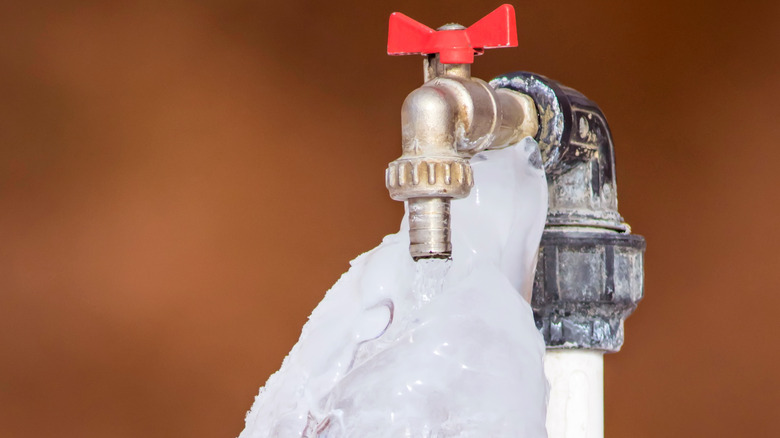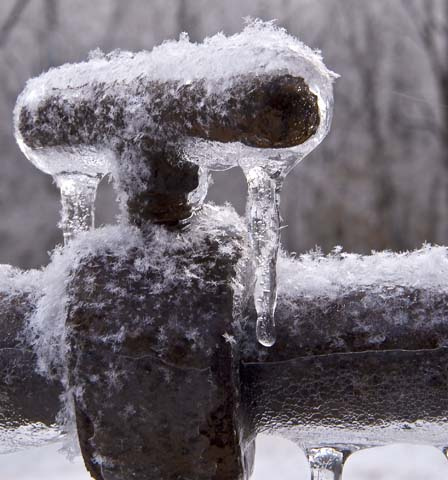Avoiding Frozen Pipes: Top Methods for Winter
Avoiding Frozen Pipes: Top Methods for Winter
Blog Article
We've found this post relating to How To Avoid Freezing Pipes down the page on the net and figured it made perfect sense to talk about it with you here.

Winter can damage your pipes, particularly by freezing pipelines. Here's exactly how to avoid it from occurring and what to do if it does.
Intro
As temperatures decrease, the threat of icy pipelines boosts, possibly leading to expensive repair services and water damages. Comprehending exactly how to avoid frozen pipes is important for house owners in chilly climates.
Understanding Icy Pipes
What causes pipelines to ice up?
Pipes freeze when revealed to temperatures below 32 ° F (0 ° C) for prolonged durations. As water inside the pipes ices up, it increases, taxing the pipeline wall surfaces and potentially triggering them to burst.
Risks and problems
Icy pipes can cause water supply interruptions, property damage, and expensive repairs. Ruptured pipes can flooding homes and cause extensive architectural damage.
Indicators of Frozen Pipes
Determining icy pipelines early can stop them from breaking.
How to identify frozen pipes
Look for decreased water flow from faucets, unusual smells or sounds from pipelines, and noticeable frost on subjected pipes.
Prevention Tips
Insulating at risk pipelines
Wrap pipes in insulation sleeves or use warmth tape to secure them from freezing temperatures. Focus on pipelines in unheated or exterior areas of the home.
Home heating techniques
Maintain interior areas properly heated up, especially areas with plumbing. Open up closet doors to allow warm air to flow around pipelines under sinks.
Protecting Exterior Pipes
Garden pipes and exterior taps
Detach and drain pipes garden tubes before winter. Set up frost-proof faucets or cover exterior taps with insulated caps.
What to Do If Your Pipelines Freeze
Immediate actions to take
If you presume icy pipes, keep taps open up to alleviate pressure as the ice melts. Use a hairdryer or towels taken in warm water to thaw pipes slowly.
Long-Term Solutions
Architectural modifications
Consider rerouting pipelines far from exterior wall surfaces or unheated areas. Add additional insulation to attics, cellars, and crawl spaces.
Upgrading insulation
Buy high-grade insulation for pipes, attic rooms, and walls. Correct insulation helps preserve consistent temperatures and lowers the danger of icy pipelines.
Conclusion
Protecting against frozen pipes needs aggressive measures and quick actions. By recognizing the causes, signs, and preventive measures, house owners can shield their pipes throughout winter.
5 Ways to Prevent Frozen Pipes
Drain Outdoor Faucets and Disconnect Hoses
First, close the shut-off valve that controls the flow of water in the pipe to your outdoor faucet. Then, head outside to disconnect and drain your hose and open the outdoor faucet to allow the water to completely drain out of the line. Turn off the faucet when done. Finally, head back to the shut-off valve and drain the remaining water inside the pipe into a bucket or container. Additionally, if you have a home irrigation system, you should consider hiring an expert to clear the system of water each year.
Insulate Pipes
One of the best and most cost-effective methods for preventing frozen water pipes is to wrap your pipes with insulation. This is especially important for areas in your home that aren’t exposed to heat, such as an attic. We suggest using foam sleeves, which can typically be found at your local hardware store.
Keep Heat Running at 65
Your pipes are located inside your walls, and the temperature there is much colder than the rest of the house. To prevent your pipes from freezing, The Insurance Information Institute suggests that you keep your home heated to at least 65 degrees, even when traveling. You may want to invest in smart devices that can keep an eye on the temperature in your home while you’re away.
Leave Water Dripping
Moving water — even a small trickle — can prevent ice from forming inside your pipes. When freezing temps are imminent, start a drip of water from all faucets that serve exposed pipes. Leaving a few faucets running will also help relieve pressure inside the pipes and help prevent a rupture if the water inside freezes.
Open Cupboard Doors
Warm your kitchen and bathroom pipes by opening cupboards and vanities. You should also leave your interior doors ajar to help warm air circulate evenly throughout your home.

We were guided to that report on Helpful Tips to Prevent Frozen Pipes this Winter from a friend on a different site. Feel free to set aside a second to distribute this entry if you liked it. We appreciate reading our article about 6 Ways to Prevent Frozen Pipes.
Detail Report this page